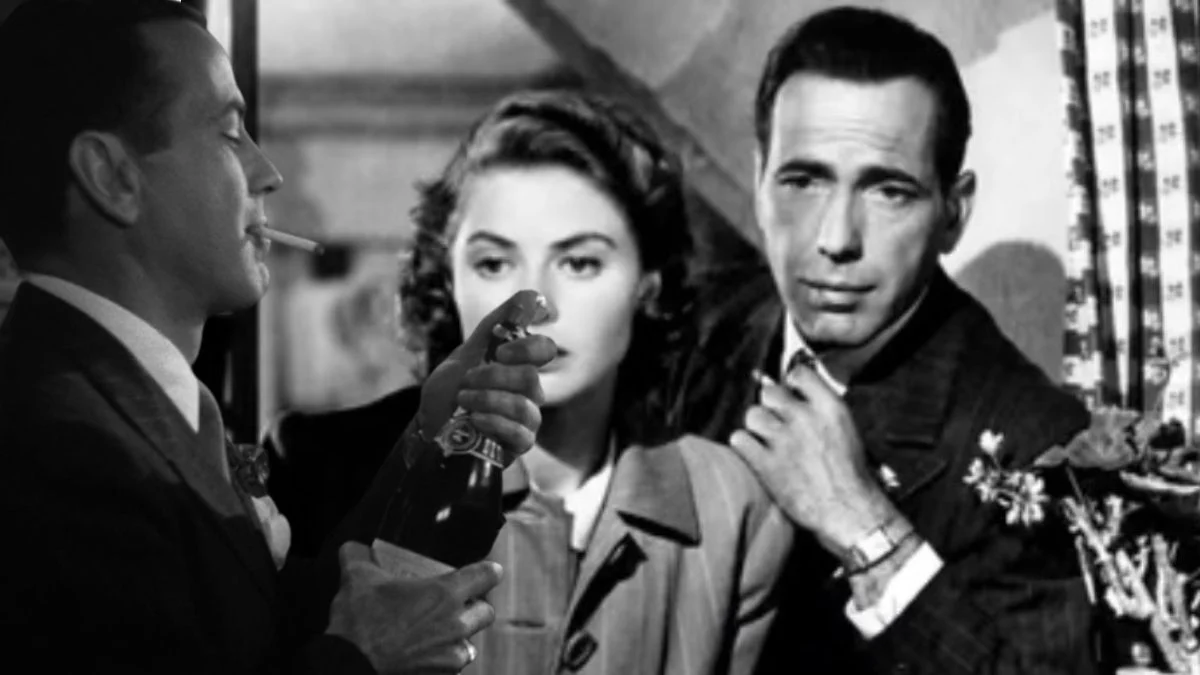
1942 saw the debut of ‘Casablanca,’ a film directed by Michael Curtiz, produced by Warner Bros, and featuring a screenplay written by Julius J Epstein, Philip G Epstein, and Howard Koch, based on Murray Burnett and Joan Alison’s play ‘Everybody Comes to Rick’s.’ Released during the ongoing war, it garnered significant Academy Awards the following year, solidifying its importance in studio era history. The narrative revolves around characters Rick Blaine, Ilsa Lund, and Victor Laszlo amidst Morocco under Vichy control, weaving themes of romance, espionage, and wartime intensity.
As a dedicated cinephile, I’ve always found this movie fascinating because it carries an enduring influence across artistic quality, acting prowess, and cultural relevance. However, it’s undeniable that certain aspects reflect the limitations and perspectives of its time within the film industry. Here’s a balanced look at five elements that showcase its aging charm, contrasted with five timeless features that still resonate powerfully in today’s pop culture:
1. Aging Charm: Costumes that remind us of the fashion trends of the era, and some dialogues that sound dated but add to the movie’s historical significance.
2. Timeless Quality: Exceptional performances that feel as powerful today as they did decades ago, and themes that continue to be relevant in modern discussions about society.
3. Aging Charm: Music and sound effects that harken back to the film’s release, adding a nostalgic touch but may seem dated compared to contemporary productions.
4. Timeless Quality: Cinematography that pushes the boundaries of what was possible at the time, still showcasing breathtaking visuals that captivate audiences today.
5. Aging Charm: Plot points and character development that reflect the societal norms and expectations of the film’s era, offering an intriguing glimpse into the past.
6. Timeless Quality: A storyline that remains engaging and thought-provoking, inviting introspection and discussions about morality and human nature even in today’s context.
Aged Poorly: Limited depiction of Moroccan people and culture
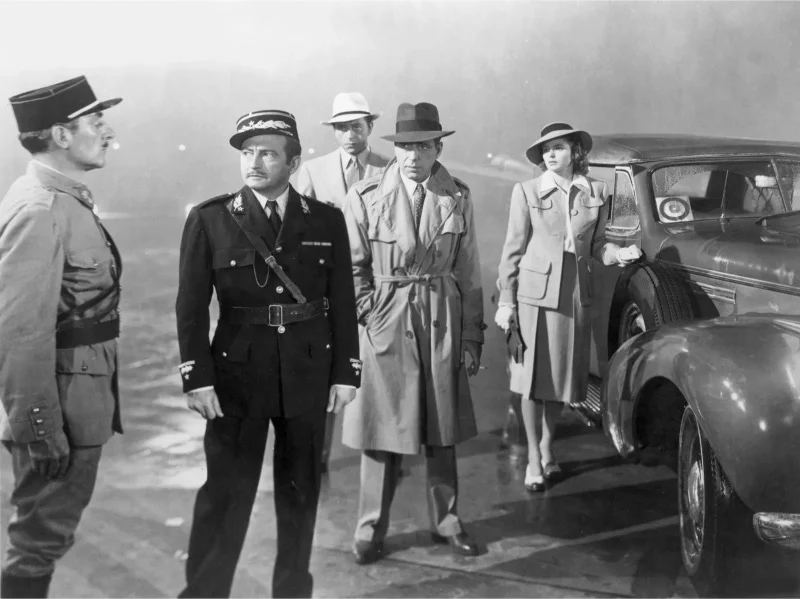
In this story, the scene is primarily set in Casablanca during 1941 under French rule, but the focus mainly revolves around European refugees and administrative officials. The Moroccan characters are often portrayed as staff members or backdrops at Rick’s Café Américain with minimal Arabic dialogue and only limited exploration of local communities, traditions, and civic aspects.
The movie was filmed on soundstages in Burbank, using exterior shots from stock footage to create its backdrop. This blend of European and American architectural choices significantly influenced the city’s portrayal within the film. While Moroccan institutions, markets, and leaders appear sparingly, contributing to the plot, they mainly serve as transit points for tales originating in Europe.
Aged Masterfully: Narrative economy and structure
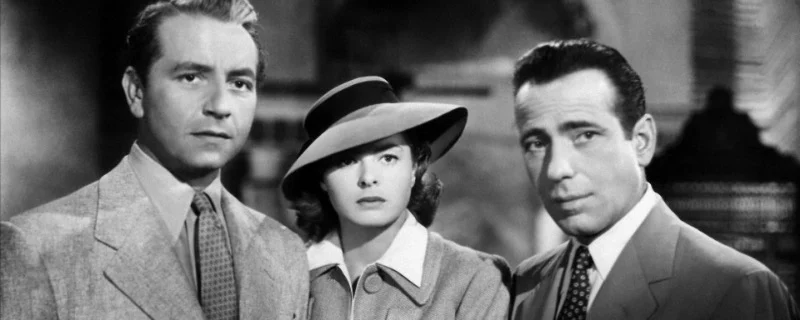
The completed movie has a succinct runtime and smoothly transitions from introduction to conclusion, with the transportation letters serving as a backbone for the character decisions throughout their journey. The screenplay transforms the stage production, streamlining scenes into concise, impactful moments, thereby ensuring that Rick, Ilsa, and Laszlo’s intentions and risks remain clear due to well-defined objectives.
Regularly, new insights about the characters in Casablanca are provided, with the Paris backstory offering explanations for their behaviors. This includes the airport finale where all loose ends, such as the letters of transit, the corrupt police force, and Major Strasser, are neatly tied up in a single location, showcasing well-structured storytelling that remains a popular example in many screenwriting courses.
Aged Poorly: Gender norms shaped by the Production Code

During that time, the Production Code prohibited scenes involving adultery and marital consequences in movies. As a result, Ilsa’s story, once it is clear she is Laszlo’s wife, was limited in its possible outcomes by these film industry standards rather than solely driven by her personal desires or intricate decision-making processes.
During the movie, Ilsa’s influence is frequently demonstrated through her interactions with Rick or Laszlo, where these discussions must adhere to film code regarding romance and duty. These limitations impact how the narrative portrays long-term implications for each character and restrict the possible outcomes that the script can present in the climactic scene.
Aged Masterfully: Dialogue that became part of everyday language
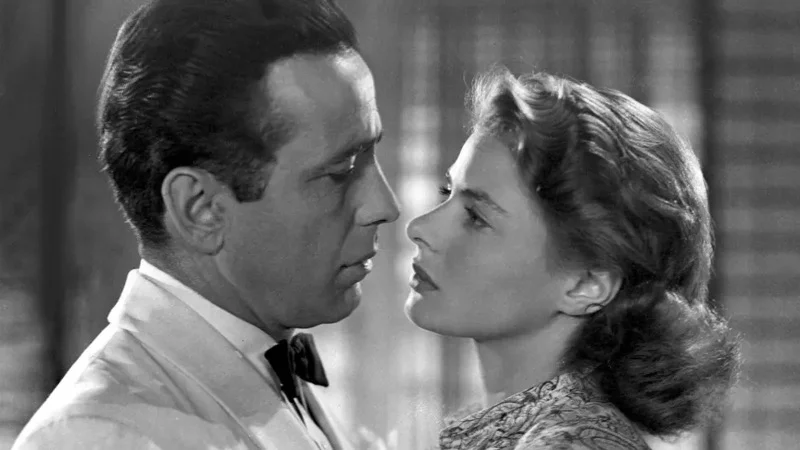
The script contains dialogue that has become familiar and widely used even among different generations. Phrases such as “here’s looking at you, kid” and “round up the usual suspects” can still be found in news headlines, sports commentary, and legal discussions, demonstrating that the script’s wording has spread beyond just the screen.
As a devoted admirer, I must share that the movie also sparked one of the most recognized misquotes in cinematic history, as no character ever uttered “play it again, Sam.” Instead, what you’ll find in the script are phrases like “play it, Sam” and “play it once, Sam, for old times’ sake,” which have been referenced in film literature and linguistic studies focusing on the evolution of memorable dialogue due to the collective reinterpretation by viewers over time.
Aged Poorly: Colonial power dynamics in the story frame

In Casablanca, the story is predominantly portrayed from the perspective of Vichy administration and European connections, with Captain Renault, German officials, and supporters of Free France influencing the political events significantly. The plot largely focuses on exit permits, police searches, and refugee congestion, which link various European cities, thus taking the backseat local government and community institutions.
In this movie, the storyline mirrors Morocco’s status as a French Protectorate during that time, reflecting the power struggle between Vichy, Free France, and Germany. However, it tends to overlook the anti-colonial sentiments and Moroccan political viewpoints, focusing more on the conflict among these European powers.
Aged Masterfully: Performances anchored by an international ensemble
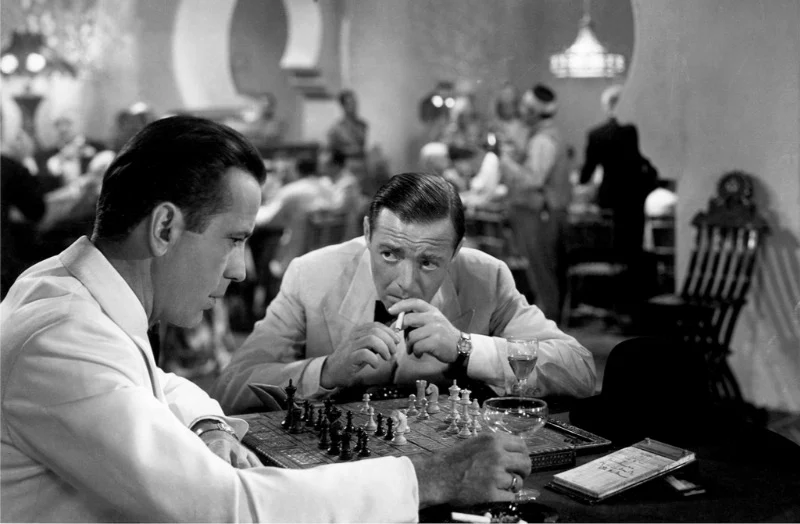
This production features stars like Humphrey Bogart, Ingrid Bergman, and Claude Rains, alongside several actors who had escaped from Europe under Nazi rule, such as Conrad Veidt, Paul Henreid, Peter Lorre, S Z Sakall, and Madeleine Lebeau. Their personal histories lend a genuine, documentary feel to the refugee scenes, as well as to the diverse blend of languages and accents heard within the café.
In the movie, Dooley Wilson, playing the character Sam, was not actually playing the piano on screen. Instead, he drummed and sang, while a professional studio musician handled the keyboard part. This unique setup enabled the camera to focus on Wilson’s vocal performance, maintaining consistency in the music throughout the various takes.
Aged Poorly: Studio era artifice in some visual effects and staging
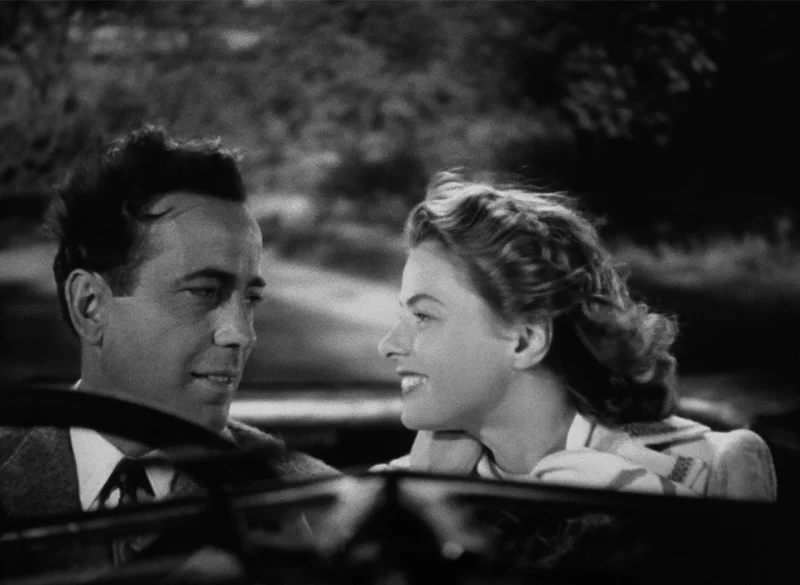
In the airport scene’s conclusion, a model airplane and strategic camera placement are employed to give an illusion of depth on a compact stage, a detail that discerning spectators might notice by considering the backdrop’s scale and fog density. Select driving sequences use rear projection, a technique popular during that era, although it may seem unnatural when viewed on contemporary high-resolution screens.
The layout of the city’s soundstage was instrumental in its geographical structure, as the café, police station, and marketplace were designed to be connected sets rather than separate locations at a distance. This compact arrangement facilitated efficient production but diminished the urban landscape, giving the impression that travel time between significant points within the narrative environment was minimal.
Aged Masterfully: Black and white cinematography and lighting design
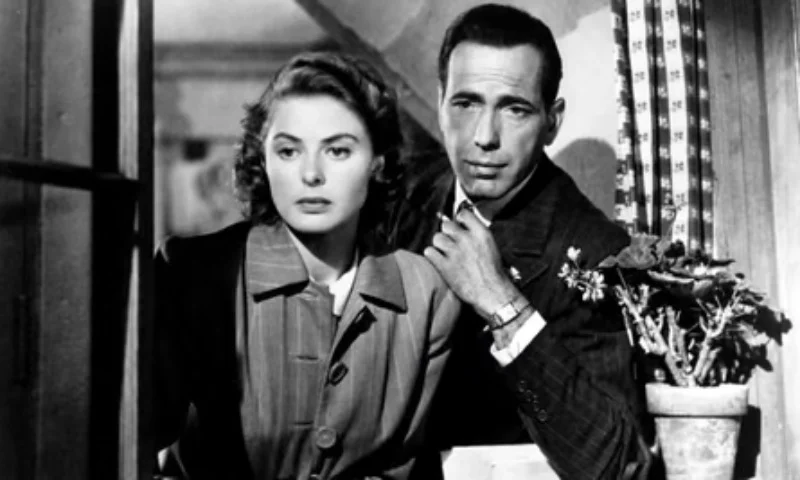
As a cinephile, I’d rephrase it like this:
In the realm of cinematography, Arthur Edeson, a master of his craft, skillfully employed low-key lighting and meticulously placed eye lights to sculpt faces and distinguish figures amidst bustling settings. Ingrid Bergman, a captivating presence on screen, was accentuated with soft diffusion and catchlights that ensured her face was consistently illuminated from various angles, all while preserving the sharp detail of Humphrey Bogart and Paul Henreid.
The lighting scheme ensures unobstructed views in the café, utilizing functional lamps and windows that provide natural illumination, especially in wider scenes. For the La Marseillaise scene, the design subtly directs the audience’s focus from the bandstand to the crowd, then to Captain Renault, thereby enhancing the emotional journey without causing viewer confusion.
Aged Poorly: Normalization of cigarette smoking and heavy drinking
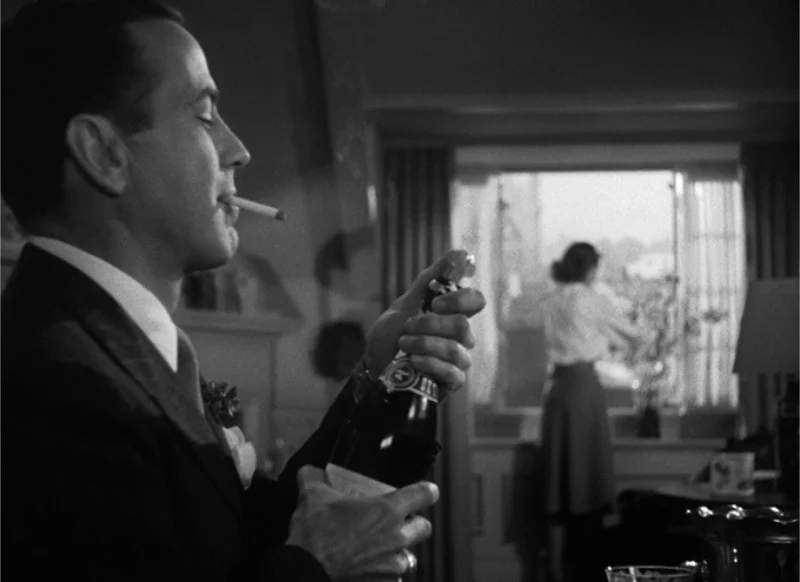
In various movie scenes, cigarettes often serve as props to emphasize moments or as part of a character’s identity, such as at bars and gaming tables. The amount of smoking depicted in these films reflects the smoking habits and filmmaking style of that era, which contrasts significantly with today’s health recommendations and regulations governing public spaces in numerous countries.
Rick’s Cafe Americain is centered around the serving of alcohol, often featuring champagne, whiskey, and brandy in scenes set during the evening. The narrative frequently connects significant decisions to drinks and bottle service, reflecting the nightlife and hospitality trends of wartime rather than contemporary regulations on advertising and representation.
Aged Masterfully: Music integration and cultural afterlife

In 1931, Herman Hupfeld penned the timeless tune “As Time Goes By.” This song gained renewed popularity when it was featured in a film, where Max Steiner incorporated it as a recurring theme within the movie’s score. Originally, Steiner intended to swap it out, but ultimately, the production chose to keep it, leading to its strong association with characters Rick and Ilsa. This decision enhanced the musical consistency throughout various scenes.
The movie’s debut coincided with significant wartime occurrences that kept it popular among the public, such as the Casablanca Conference held shortly after its premiere in early 1943. Over the years, the title has been adopted for cinemas, eateries, and film festivals globally, and its quotes and visuals have been used in advertisements, political speeches, and academic materials related to cinema and history studies.
Express your thoughts on ‘Casablanca’ in the comment section, and identify which elements of this classic film continue to resonate with audiences today, as well as those that seem somewhat outdated by modern standards.
Read More
- Fed’s Rate Stasis and Crypto’s Unseen Dance
- Silver Rate Forecast
- Blake Lively-Justin Baldoni’s Deposition Postponed to THIS Date Amid Ongoing Legal Battle, Here’s Why
- Красный Октябрь акции прогноз. Цена KROT
- Ridley Scott Reveals He Turned Down $20 Million to Direct TERMINATOR 3
- MSCI’s Digital Asset Dilemma: A Tech Wrench in the Works!
- Global-e Online: A Portfolio Manager’s Take on Tariffs and Triumphs
- Bitcoin’s Ballet: Will the Bull Pirouette or Stumble? 💃🐂
- ETH to the Moon? 🚀 Or Just a Bubble?
- The VIX Drop: A Contrarian’s Guide to Market Myths
2025-08-22 00:17